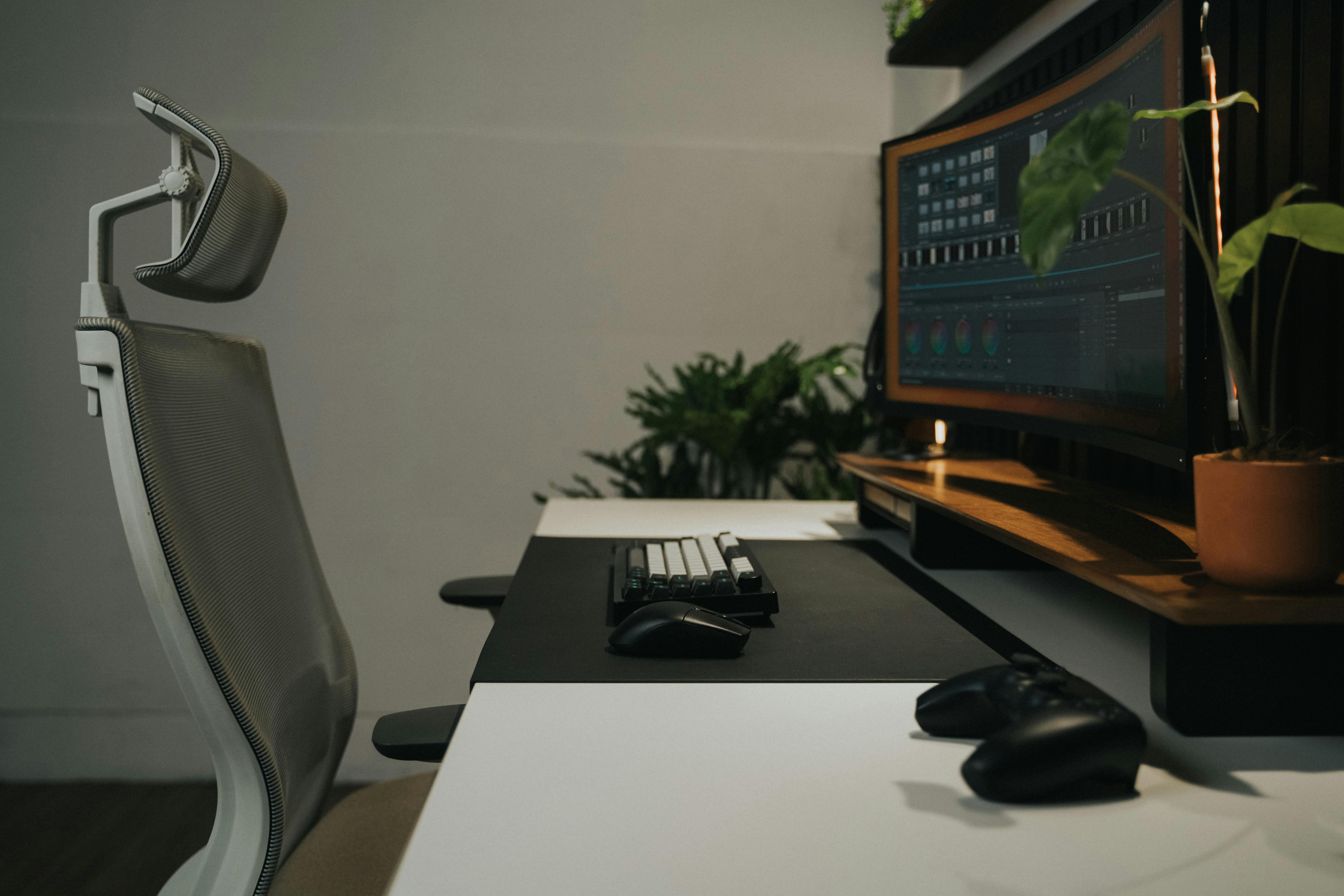Why raising your monitor is essential for your musculoskeletal health
Monitor height plays a pivotal role in promoting a comfortable and healthy workspace. Misaligned monitors often cause excessive neck flexion (looking down), forward head posture, or even upward tilting, leading to neck strain, shoulder tension, and eye fatigue. Raising your monitor to the correct height is a simple adjustment with profound benefits for your productivity and musculoskeletal health.
The benefits of proper monitor height
Positioning your monitor correctly can help:
- Reduce neck strain: Keeping the top of the screen at or just below eye level allows your neck to stay in a neutral position, minimising muscle tension and the risk of "tech neck."
- Encourage better posture: Proper monitor alignment discourages slouching and forward head posture, reducing strain on your cervical spine and shoulders.
- Enhance focus and comfort: When your screen is at the right height and distance (about an arm’s length away), it’s easier to maintain focus without straining your eyes or leaning forward.
Choosing the right monitor stand
A good monitor stand ensures proper alignment and offers features to enhance comfort and usability. Consider these factors:
- Adjustability: Height-adjustable stands allow you to customise the monitor’s position for your specific needs, ensuring the top of the screen aligns with your eye level.
- Stability: A sturdy stand keeps the monitor secure, preventing wobbling as you type or make adjustments.
- Space efficiency: The stand should fit comfortably on your desk while leaving enough room for your other essentials.
- Ergonomic features: Some stands offer tilt, swivel, and rotation options to achieve the perfect viewing angle and reduce glare.
- Cable management: Built-in cable organisers keep your desk tidy, reducing clutter and potential distractions.
DIY solutions for raising your monitor
If a monitor stand isn’t readily available, there are simple, cost-effective alternatives:
- Stack books: Use large, sturdy books to elevate your monitor. Ensure the stack is even and stable to prevent the monitor from tilting or toppling.
- Repurpose household items: Items like shoeboxes or storage bins can also work in a pinch, as long as they provide a level and secure base.
How to position and adjust your monitor
- Set the correct height: The top of your screen should align with or sit just below your eye level when you’re sitting upright.
- Check your viewing distance: Position your monitor at least an arm’s length away to reduce eye strain while keeping the text and images clear.
- Perform a posture check: Sit comfortably in your chair with your back supported. Close your eyes, and when you open them, your gaze should naturally fall on the top third of the screen.
- Make regular adjustments: If your tasks vary (e.g., reading documents vs. video conferencing), adjust the monitor height and tilt as needed.



